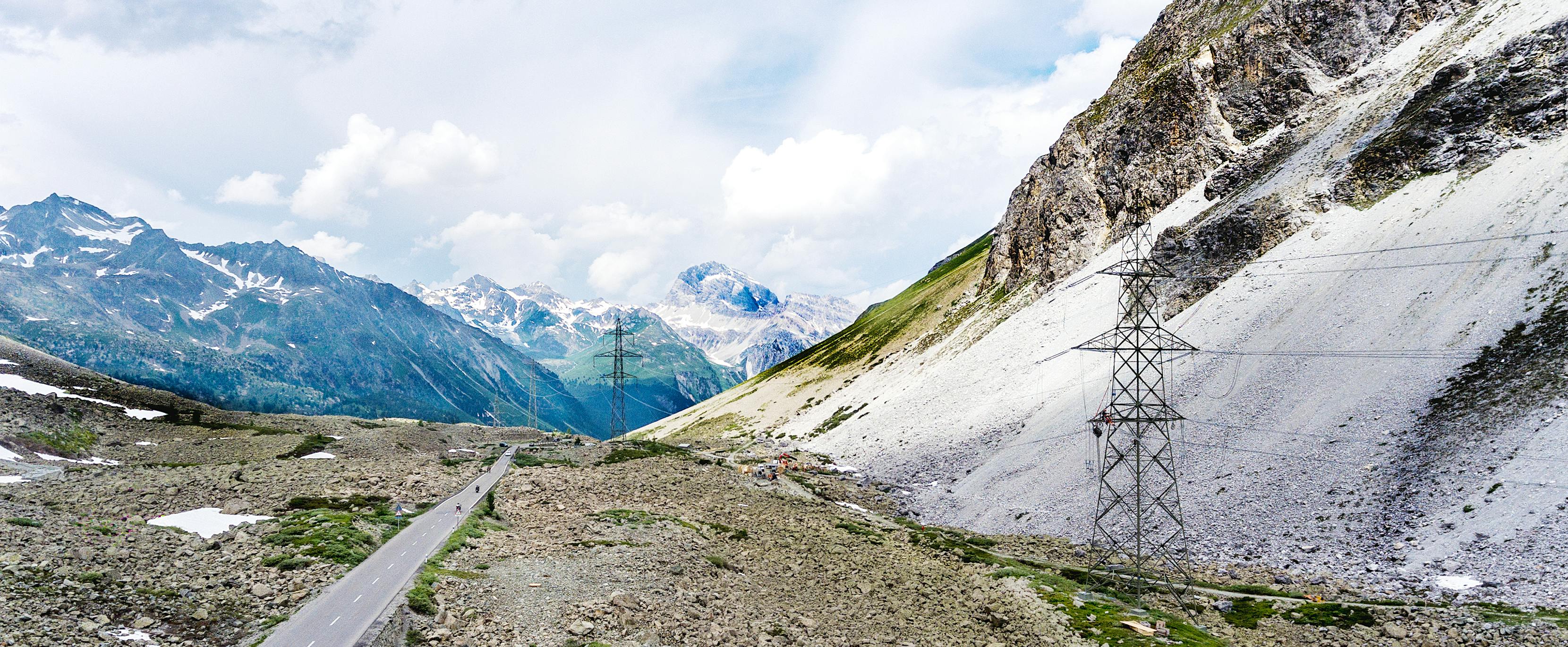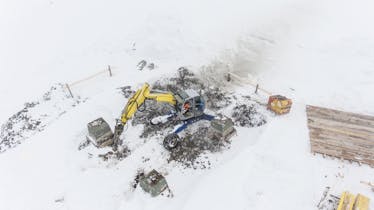Maintenance 2019

It is a summer day at the end of July and the sun is beating down on the Albula Pass. The four new pylons on the extra-high-voltage line gleam silver. It is hard to believe that the snow was several metres deep here just a few weeks before and the thermometer showed -18 degrees. But those were the conditions faced by workers in mid-April when they started maintenance activities on the 380-kV lines between Pradella and Sils.
The repairs were needed after extremely high winds from the storm front Vaia knocked over four pylons near the top of the pass in the night of 29 to 30 October 2018. The affected 380-kV lines had been out of service ever since. Although they are very important, Swissgrid did not implement a temporary solution for safety reasons.
First, access to the top of the pass had to be ensured. With that in mind, the canton of Graubünden’s civil engineering department cleared the pass road from the Engadine side. In places, the machines had to cut through metre-high snow.
Work in the high alpine region in the spring presents very special safety challenges. In addition to the usual safety precautions on construction sites, the safety plan also needed to take the weather and the danger of avalanches into account. Each morning an avalanche commission prepared a report that regulated the road access and indicated which of the flattened pylons could even be worked on.
Nobody was even allowed on the pass without an avalanche detector. In case of emergency, a container would have offered refuge for 48 hours. The problem was not just the cold and the heavy snowfall, but also the wind and the snow drifts.
The huge quantities of snow were followed by the thaw in the spring. The deluge of water could barely drain off. Whenever additional rain fell, a lake formed on the pass road.
Despite all the meteorological challenges, it was possible to complete the project as planned. The line over the Albula Pass was put back in operation at the end of July. Even though the weather was difficult and there was considerable time pressure, the Swissgrid safety concept was up to the challenge: no one came to any harm while carrying out the work.











